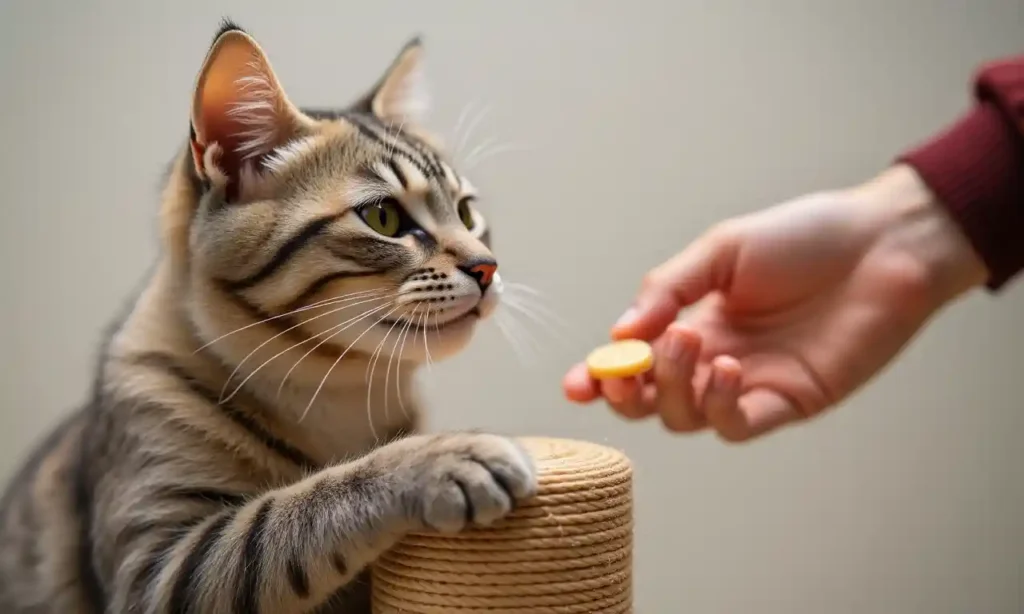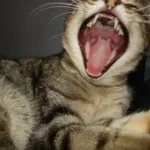Cats are enigmatic creatures, often leaving us puzzled with their behaviors and gestures. Have you ever wondered what your cat is really trying to say with that flick of the tail or the way they knead your lap? Understanding cat body language is essential for building a strong bond with your feline friend and ensuring their well-being. In this comprehensive guide, we’ll explore the various signals your cat gives through their body language, helping you decode their moods and needs. By the end, you’ll be equipped with the knowledge to interpret your cat’s communication better.
Main Points of Post
Why Understanding Cat Body Language Matters
Understanding your cat’s body language is crucial for several reasons:
- Enhanced Bonding: The better you understand your cat, the stronger your bond will be.
- Stress Reduction: Recognizing signs of stress or discomfort allows you to take steps to alleviate your cat’s anxiety.
- Safety: Knowing when your cat feels threatened can help you prevent potentially dangerous situations.
- Behavior Management: Understanding what triggers certain behaviors can help you manage them more effectively.
How can I improve my relationship with my cat?
Improving your relationship with your cat starts with understanding their body language. By responding appropriately to their cues, you can foster a trusting and loving environment.
Key Cat Body Language Cues to Recognize
1. Tail Position
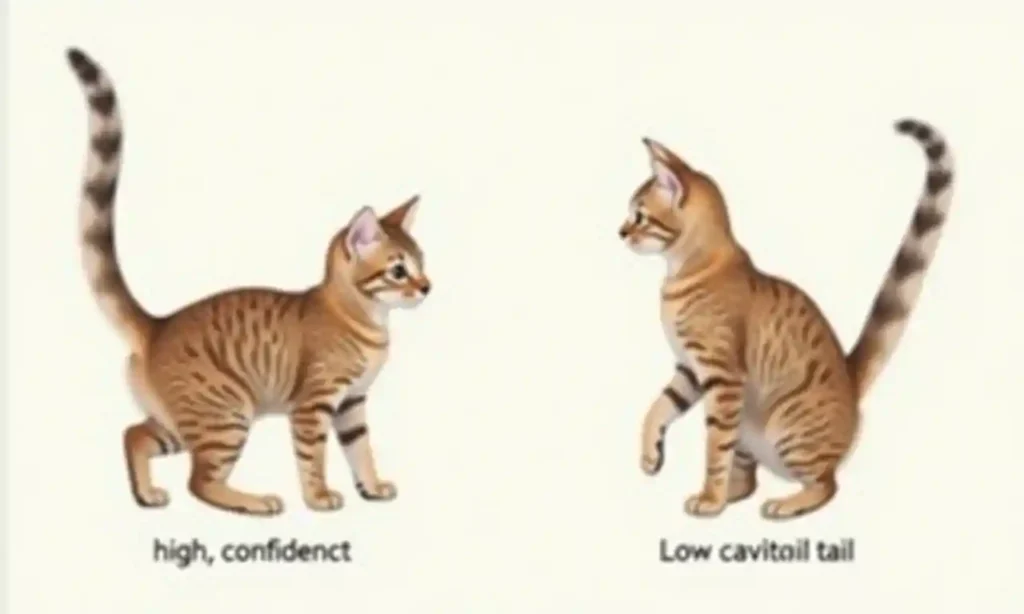
The position of your cat’s tail is one of the most significant indicators of their mood.
- Upright Tail: A cat with a tail held high is feeling confident and happy. This is a good time for petting!
- Puffed-Up Tail: If your cat’s tail is fluffed up, they’re feeling threatened or scared. This is a classic sign of a defensive posture.
- Low Tail: A tail that is held low indicates submission or fear. Pay attention to other body language cues in this state.
- Tail Flicking: Quick flicks usually indicate agitation or excitement. If your cat’s tail is flicking back and forth, they may be feeling annoyed or overstimulated.
What does it mean when my cat’s tail is twitching?
Twitching or flicking can indicate excitement or irritation. It’s best to observe other body language cues to gauge their overall mood.
2. Ear Position
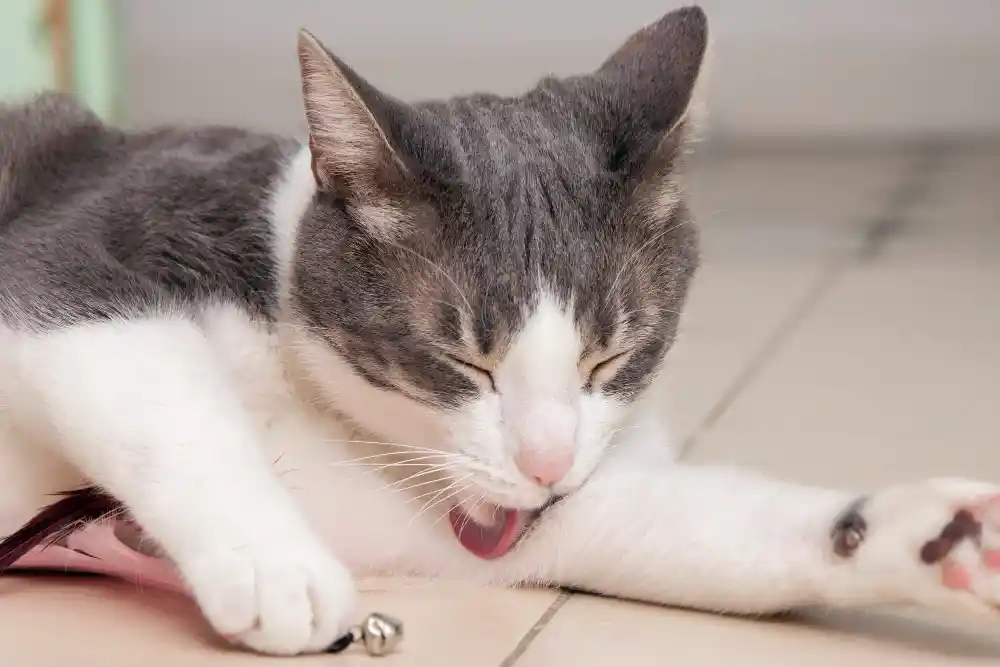
Cats use their ears to communicate their feelings as well.
- Ears Forward: This indicates curiosity or interest. Your cat is alert and engaged.
- Ears Back: Ears that are pinned back against the head suggest fear, aggression, or irritation.
- Ears Turned to the Side: When a cat’s ears are sideways, they may be feeling uncertain or anxious about their surroundings.
How do I know if my cat is comfortable?
If your cat’s ears are forward and relaxed, they’re likely comfortable. Pay attention to their tail position and overall demeanor for a full picture.
3. Eyes and Blinking
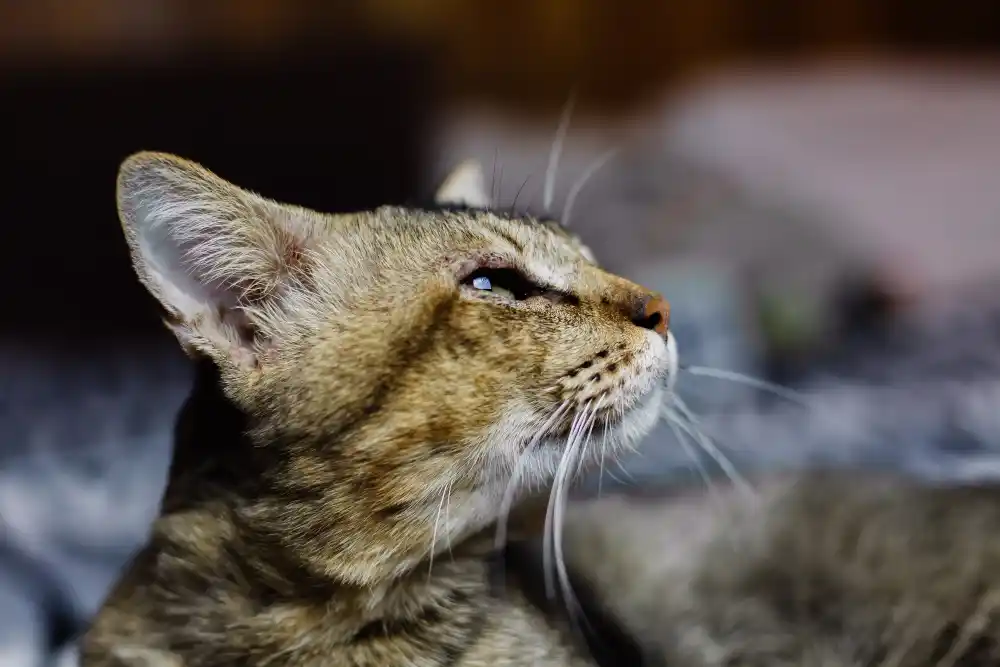
Your cat’s eyes can tell you a lot about their emotional state.
- Slow Blinking: When your cat gives you a slow blink, it’s a sign of trust and affection. You can return the gesture to strengthen your bond.
- Dilated Pupils: Large pupils can indicate excitement, fear, or aggression. If your cat’s pupils are dilated, observe their surroundings for potential stressors.
- Staring: A direct stare can be perceived as a threat. If your cat is staring at you, they may be feeling aggressive or uncomfortable.
Related Query: How can I tell if my cat trusts me?
Slow blinking is a great indicator of trust. Additionally, if your cat seeks your company and allows petting, they likely feel safe with you.
4. Body Posture

Your cat’s overall body posture reveals a lot about their mood.
- Relaxed Body: A relaxed cat will lie with their body stretched out and limbs loose. This indicates that they feel safe and secure.
- Arched Back: An arched back, often seen in cats when they’re frightened, indicates a defensive stance. They may also puff up to appear larger.
- Crouching: A crouched position suggests fear or submission. If your cat is hiding or staying low, they might be feeling threatened.
What should I do if my cat looks scared?
If your cat appears scared or is hiding, give them space. Allow them to approach you when they feel comfortable, and avoid sudden movements that could startle them.
5. Kneading
Kneading is a common behavior seen in cats and can indicate several things.
- Comfort: Cats often knead when they’re feeling relaxed and content, reminiscent of kittenhood when they kneaded their mothers for milk.
- Marking Territory: Cats have scent glands in their paws, and kneading can be a way to mark their territory.
Why does my cat knead on me?
If your cat kneads on you, it usually means they feel safe and happy in your presence. Enjoy the affection!
Additional Signals to Note
6. Vocalizations
Cats communicate vocally as well, and understanding their meows, purrs, and growls can help you decode their messages.
- Purring: Often indicates contentment, but can also signify pain in some contexts. Pay attention to the situation.
- Growling or Hissing: Signs of aggression or fear. Your cat is warning you to back off.
- Chirping or Chattering: This behavior is often seen when a cat is watching birds or small animals, possibly expressing frustration.
How do I interpret my cat’s meows?
Each cat has its own unique set of vocalizations. Pay attention to the context and tone to interpret their meaning more accurately.
7. Grooming Behavior
Grooming is an essential part of a cat’s routine, but how they groom can provide insights into their emotional state.
- Excessive Grooming: This can indicate stress or anxiety. If your cat is grooming excessively to the point of creating bald patches, it’s essential to consult a vet.
- Social Grooming: Cats that groom each other are bonding and establishing social hierarchies.
What does it mean if my cat is grooming too much?
Excessive grooming can be a sign of stress or a medical issue. Consult your veterinarian if you notice significant changes in grooming behavior.
How to Respond to Your Cat’s Body Language
Understanding cat body language is just the first step. Here are some tips on how to respond effectively:
- Respect Their Space: If your cat is showing signs of fear or aggression, give them space. Don’t force interaction.
- Engage When They’re Ready: Look for signs of curiosity or relaxation to engage with your cat.
- Positive Reinforcement: Use treats and praise to encourage positive behaviors when your cat is relaxed or playful.
- Create a Safe Environment: Provide hiding spots and safe spaces where your cat can retreat if they feel stressed.
How can I create a stress-free environment for my cat?
Ensure your home is calm, provide plenty of enrichment activities, and establish a routine to help your cat feel secure.
The Benefits of Understanding Cat Body Language
By mastering the art of interpreting your cat’s body language, you’ll experience a range of benefits:
- Improved Communication: You’ll be better equipped to understand your cat’s needs, leading to fewer misunderstandings.
- Stronger Bond: Knowing when your cat is happy or anxious allows you to respond appropriately, strengthening your relationship.
- Enhanced Well-Being: Recognizing signs of stress or discomfort can help you take proactive measures to improve your cat’s quality of life.
Final Words: Become a Cat Body Language Expert
Understanding cat body language is an invaluable skill for any cat owner. By paying attention to your cat’s signals—tail position, ear orientation, eye contact, and more—you can deepen your relationship and create a harmonious living environment.
Whether your cat is feeling playful, relaxed, or anxious, being attuned to their needs will enhance both your lives. So the next time you catch your cat flicking their tail or giving you a slow blink, remember that they’re communicating with you. Embrace this unique language, and watch your bond flourish.

